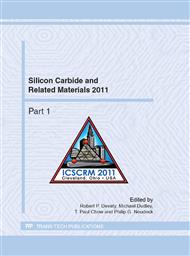p.65
p.69
p.75
p.81
p.87
p.93
p.97
p.101
p.105
Growth and Light Properties of Fluorescent SiC for White LEDs
Abstract:
The LED technology started to developed many years ago with red light emitting diodes. To achieve the blue LED, novel growth technologies and process steps were explored, and made it possible to demonstrate efficient blue LED performance from nitrides. The efficiency was further developed and blue LEDs were commercially introduced in the 1990’s. The white LED became possible by the use of the blue LED and a phosphor that converts a part of the blue light to other colors in the visible range to combine into white light. However, even today there are limitations in the phosphor-based white LED technology, in particular for general lighting, and new solutions should be explored to speed the pace when white LEDs will be able to make substantial energy savings. In this paper we overview gallium nitride materials evolution and growth concepts for LEDs. We describe the fluorescent silicon carbide material prepared by a novel growth technology for a new type of white LED in general lighting with pure white light. This paper introduces an interesting research in fundamental growth and optical properties of light emitting silicon carbide.
Info:
Periodical:
Pages:
87-92
Citation:
Online since:
May 2012
Keywords:
Price:
Сopyright:
© 2012 Trans Tech Publications Ltd. All Rights Reserved
Share:
Citation:


